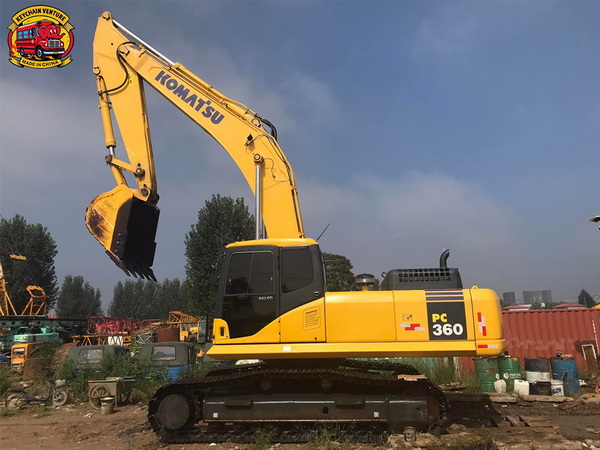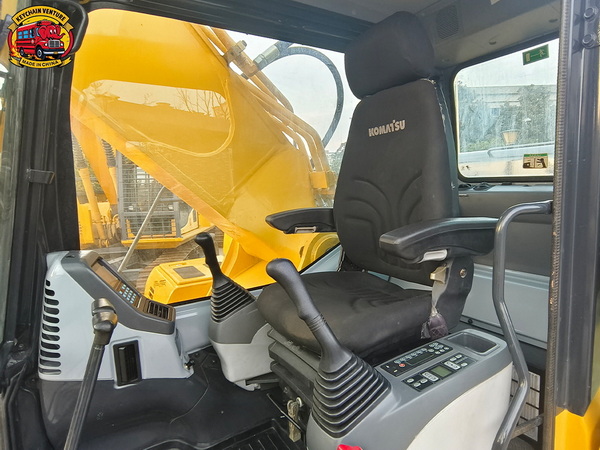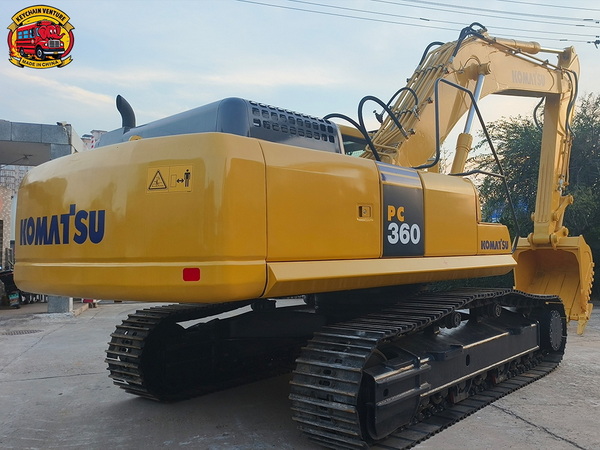







Content Menu
● Key Components of an Excavator
● Step-by-Step Guide on How to Use an Excavator
>> Basic Movements and Operation
● Additional Important Excavator Skills
>> Efficient Material Handling
>> Working on Different Terrains
● Safety Tips When Using an Excavator
● Maintenance Tips for Long-Lasting Excavator Use
● Advantages of Buying a Used Excavator
● Common Challenges in Operating Excavators and How to Overcome Them
● Tips for Maximizing Productivity with an Excavator
● Frequently Asked Questions (FAQ)
>> 1. What should I look for when buying a used excavator?
>> 2. Can a beginner operate an excavator safely?
>> 3. How often should an excavator be serviced?
>> 4. What attachments can be used with excavators?
>> 5. Are used excavators reliable for heavy construction work?
Operating an excavator efficiently and safely is crucial for construction projects, mining, landscaping, and other heavy-duty tasks. For companies like KeyChain Venture Co., Ltd., a top commercial vehicle supplier in China providing high-performance buses and heavy trucks, understanding how to utilize essential machinery such as excavators is vital. This guide thoroughly explains how to use an excavator, emphasizing practical steps, safety tips, and maintenance advice.

An excavator is a powerful piece of heavy equipment designed to perform digging, material handling, demolition, dredging, and construction. It features a boom, stick, bucket, and cab mounted on a rotating platform called the house. Excavators are indispensable on job sites, available in various sizes and configurations suited to diverse tasks.
Excavators come in multiple types, each suited for different operational environments and goals:
- Crawler Excavators: Equipped with durable tracks that provide excellent stability for uneven, soft, or rough terrain. They are widely used in heavy construction and mining.
- Wheeled Excavators: These have tires instead of tracks, making them faster and more maneuverable on paved roads but less stable on loose ground.
- Mini Excavators: Small and compact, perfect for confined spaces or smaller jobs like residential landscaping and utility work.
- Long Reach Excavators: Feature extended booms and sticks for reaching difficult or distant sites, frequently used in dredging or tall structure demolition.
- Used Excavator models exist across these categories, providing affordable options with proven reliability when properly maintained.
A good operator understands each part of the excavator and its role:
- Boom: The main arm piece connected to the house that can be raised and lowered.
- Stick (Dipper Arm): Attaches to the boom and extends or retracts to reach the digging site.
- Bucket: Mounted on the stick's end and used for digging, scooping, trenching, and loading materials.
- Cab: The enclosed space where the operator controls the machine.
- House: The rotating platform containing the engine and cab.
- Tracks or Wheels: Allow the machine mobility over various surfaces depending on the model.
Before starting, a thorough check of the excavator is critical, especially for a used excavator which might have additional wear:
- Inspect fluid levels: engine oil, hydraulic fluid, coolant, and fuel.
- Walk around the excavator to check for visible damage, leaks, or wear on components.
- Ensure safety devices and alarms are functional.
- Check the condition of the bucket and teeth, as these endure most wear.
- Confirm the area around the machine is clear of hazards.
- Safely enter the cab using handrails and climbing steps.
- Fasten the seatbelt to stay secure during operations.
- Turn the ignition key and allow the system to perform self-diagnostics.
- Observe the control panel for any warning indicators.
- The two joystick levers manage boom, stick, bucket movements and rotation of the house.
- Foot pedals or levers control movement of the tracks or wheels.
- Secondary buttons may operate auxiliary hydraulics for attachments or other features.
- Move the right joystick to raise or lower the boom.
- Push or pull the left joystick to extend or retract the stick.
- Curl or un-curl the right joystick to operate the bucket.
- Twist the left joystick to rotate the house left or right.
- Use foot pedals or levers to move and steer the excavator.
- For trenching, dig slowly and steadily, ensuring vertical walls where needed.
- When loading trucks, position the excavator with easy swing access to the bed.
- Use the bucket edges to perform fine grading by gently scraping the surface.
- Use attachments as needed to break hard materials or remove debris.

Proper material handling reduces cycle times and increases productivity. Operators should:
- Minimize full rotations of the house, swing the boom only when necessary.
- Use the excavator's reach to position the bucket as close to the load destination as possible.
- Avoid jerky or sudden movements to prolong machine life.
Each terrain requires unique strategies:
- On soft or muddy ground, lower the boom and maintain low speed to avoid sinking.
- On slopes, traverse carefully and avoid lateral movements on steep inclines.
- Position tracks wide apart for enhanced stability when digging near edges.
Ensuring safety while operating an excavator prevents accidents and injuries:
- Always wear PPE such as helmets, gloves, safety glasses, and steel-toe boots.
- Be aware of your swing radius and maintain safe distances from workers and structures.
- Never overload the bucket or exceed the specified lifting capacity.
- Use a spotter when working near traffic zones or underground utilities.
- Lower the boom and park the excavator on flat ground before leaving the cab.
- Follow all workplace safety protocols and local regulations.
Proper maintenance extends the life of any excavator:
- Clean the undercarriage regularly to prevent buildup of debris and mud that accelerates wear.
- Check hydraulic hoses and fittings for leaks or cracks.
- Service engine oil, filters, and fluids at recommended intervals.
- Inspect the bucket teeth frequently and replace when worn to preserve digging efficiency.
- Use quality replacement parts, especially for used excavator components.
- Keep an eye on the track tension to avoid excessive wear or slippage.
Purchasing a used excavator has many benefits:
- Cost Savings: Often priced significantly lower than new machines.
- Availability: Immediate stock rather than long waiting periods for new models.
- Proven Reliability: Many machines come with documented service histories demonstrating durability.
- Range of Options: Access to various brands, models, and sizes to fit budget and purpose.
- When acquiring a used excavator, ensure it has undergone professional inspections and maintenance.
Excavators present blind spots; using rearview cameras or spotters enhances safety.
Beginners may find joysticks sensitive. Practice smooth and gradual movements.
Maintain coolant levels and avoid prolonged high-load operation without breaks.
Regular inspection and maintenance of hydraulic components reduce breakdowns.
Frequent inspection and timely replacement prevent costly damage.
- Plan work to minimize unnecessary machine movements.
- Match the excavator size and attachments to your project requirements.
- Invest in operator training to improve efficiency and safety.
- Utilize technology such as GPS guidance for precision digging.
- Schedule routine maintenance to avoid sudden breakdowns.
Learning how to use an excavator effectively is indispensable for construction professionals and contractors. Whether operating a brand-new machine or a well-maintained used excavator, comprehension of components, controls, and best practices can significantly enhance productivity, safety, and equipment longevity. Regular inspections and methodical maintenance ensure the excavator continues to deliver optimal performance across diverse terrains and applications. By following this comprehensive guide, operators will be well-equipped to confidently and efficiently handle any excavation task.

Inspect hydraulic systems for leaks, evaluate engine hours, review maintenance records, and check the structural integrity, specifically the boom and tracks.
Yes, with formal training and supervision, beginners can learn safe and effective operation techniques.
Generally, service should occur every 250 to 500 operating hours, following the manufacturer's guidelines.
Popular attachments include buckets of various sizes, grapples, hydraulic breakers, augers, and shears tailored for demolition, digging, or material handling.
When properly maintained and inspected, used excavators can deliver dependable performance comparable to new machines.